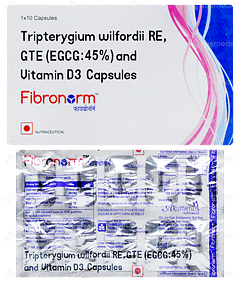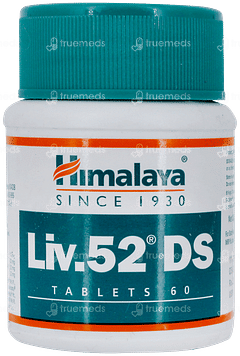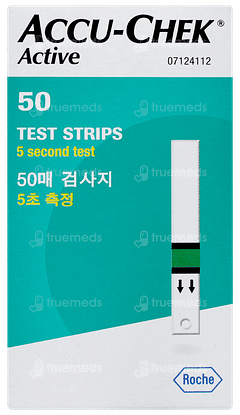Phantom Limb Pain
Phantom limb pain is a condition where individuals experience pain, sensations, or other feelings in a body part that has been amputated or removed. It most commonly occurs after limb amputation but can also involve other removed body parts. The pain and sensations can vary in type, duration, and intensity and may be triggered by various factors.
Last updated on : 02 Dec, 2024
Read time : 11 mins

Overview of Disease
Phantom limb pain (PLP), also known as phantom pain, is a condition where an individual experiences pain or discomfort in a limb or body part that is no longer physically present, typically after amputation. This phenomenon highlights the intricate relationship between the nervous system and the brain's interpretation of bodily sensations. While phantom limb pain can be distressing, it is important to distinguish it from other conditions, such as osteomyelitis.
What is Phantom Limb Pain (phantom pain)?
Phantom limb pain refers to the sensation of pain or discomfort that seems to originate from a limb or body part that has been surgically removed or lost due to trauma. The pain can vary in intensity, frequency, and duration and can significantly impact an individual's quality of life. Despite the absence of the physical limb, the brain continues to perceive sensations as if the limb were still present, leading to the experience of phantom pain.
Key Factors about Phantom Limb Pain
| Category | Details |
| Also Referred as | Phantom limb pain, phantom limb syndrome, amputation - phantom limb |
| Commonly Occurs In | Individuals who have undergone amputation, more common in upper extremity amputations |
| Affected Organ | Nervous system, brain, spinal cord, amputated limb area |
| Type | Phantom limb sensation (without pain), phantom limb pain |
| Common Signs | Sharp pain, shooting pain, aching, burning, cramping, tingling, prickling, numbness, hot or cold sensations, feeling of limb movement or presence |
| Consulting Specialist | Neurologist, pain management specialist, physical medicine and rehabilitation specialist |
| Treatement Procedures | Medications (paracetamol, aspirin, ibuprofen), physical therapy, psychological support, alternative therapies (e.g., deep breathing, relaxation techniques) |
| Managed By | Medications (paracetamol, aspirin, ibuprofen), |
| Mimiciking Condition | Restless Legs Syndrome, Residual Limb Pain, and Complex Regional Pain Syndrome (CRPS) |
Types of Phantom Limb Pain
Phantom pain can manifest in various forms, including:
Intermittent Pain: This type of pain comes and goes, varying in intensity and duration. It may occur sporadically throughout the day or night.
Continuous Pain: Some individuals experience persistent pain with occasional acute exacerbations. This type of pain is more constant and can be challenging to manage.
Triggered Pain: Certain factors, such as emotional stress, changes in weather, or pressure on the remaining stump, can initiate or worsen phantom pain episodes.
In addition to phantom pain, some individuals may experience phantom sensations without pain, such as feelings of touch, pressure, temperature, itch, or vibration in the absent limb. These sensations can be just as disconcerting as phantom pain and may require specialised management strategies. As we explore the symptoms of phantom limb pain further, it is crucial to differentiate it from other conditions like osteomyelitis.
Symptoms of Phantom Limb Pain
Phantom pain can manifest in various forms and intensities, accompanied by a range of sensory experiences. Some common symptoms include:
Pain Types:
Sharp or shooting pain
Achy pain
Burning pain
Cramping pain
Tingling or pins and needles
Throbbing
Electric shock-like sensations
Sensory Experiences:
Kinetic sensations (feeling of movement in the missing limb)
Kinaesthetic sensations (perception of size, shape, and position of the absent limb)
Exteroceptive sensations (touch, pressure, temperature, itch, and vibration in the phantom limb)
Several factors can exacerbate phantom pain, such as fatigue, pressure on the stump, changes in weather, stress, infection, poorly fitting prosthetic devices, poor blood flow, and swelling in the residual limb.
The duration and intensity of phantom pain can vary significantly, lasting from seconds to minutes, hours, or even days. The pain may be episodic or continuous and can range from mild to severe, often fluctuating over time.
Recognising the diverse symptoms and triggers of phantom pain is crucial for developing effective management strategies and improving the quality of life for amputees.
Causes of Phantom Limb Pain
Phantom pain, particularly phantom limb pain, is a complex condition with various underlying causes. While the exact etiology remains unclear, several factors are believed to contribute to the development of phantom pain:
Nerve Damage: When a body part is removed, it results in damage to the peripheral nerves, which can lead to irritation and overexcitation of the nerve endings, causing spontaneous sensations.
Central Sensitisation: Peripheral nerve damage during amputation or injury can increase neural activity and sensitivity in the spinal cord, ultimately leading to phantom pain.
Brain Remapping: Following the removal of a body part, the brain redirects sensations from that area to another part of the body, a process known as remapping or reorganisation. This can cause pain in the missing body part when nerves in the surrounding region are stimulated.
Psychological Factors: Mental health conditions such as depression, anxiety, and elevated stress levels can trigger or contribute to the occurrence of phantom pain.
Neuroma Formation: The development of neuromas, which are abnormal growths of nerve tissue, in the residual limb can play a role in the manifestation of phantom limb pain.
Changes in Barometric Pressure: Fluctuations in weather conditions can exacerbate phantom limb pain for some individuals.
Other Triggers: Various activities or conditions, including urination, defecation, sexual intercourse, angina, cigarette smoking, and herpes zoster, have been known to trigger episodes of phantom limb pain.
Understanding these potential causes can help healthcare professionals develop targeted treatment plans to alleviate the discomfort associated with phantom pain.
Complications
Phantom limb pain can give rise to several complications that further impact an individual's quality of life:
Chronic Pain Syndrome: In many cases, phantom limb pain can evolve into a chronic pain syndrome, necessitating a comprehensive approach that addresses the patient's pain behaviors and pain processing mechanisms for effective management.
Depression and Anxiety: The persistent nature of phantom limb pain can either contribute to or worsen symptoms of depression and anxiety in affected individuals.
Sleep Disturbances: The discomfort associated with phantom limb pain can significantly disrupt sleep patterns, further compromising the individual's overall well-being.
Limited Mobility and Functionality: Phantom limb pain can sometimes hinder the effective use of prosthetic limbs, consequently affecting the person's mobility and ability to perform daily activities.
Recognising and addressing these potential complications is crucial for providing comprehensive care to individuals experiencing phantom limb pain.
Prevention of Phantom Limb Pain
Preventing phantom limb pain involves a multifaceted approach that starts before the amputation.
Preoperative Pain Management: Effective pain control before amputation can significantly reduce the risk and severity of phantom limb pain. This includes the use of epidural analgesia, intravenous patient-controlled analgesia, and other multimodal pain management strategies.
Epidural Analgesia: Initiating epidural analgesia at least 24 to 48 hours before surgery and continuing it into the postoperative period has been shown to reduce the incidence of phantom limb pain.
Perioperative Opioid Management: Optimised use of opioids through patient-controlled analgesia (PCA) and epidural infusion can decrease the prevalence of phantom limb pain.
Multimodal pain management: Using a comprehensive approach that incorporates regional analgesia, medications, and psychological support can help prevent acute pain from transitioning into chronic phantom limb pain.
Surgical Technique: Understanding and optimising the surgical technique, particularly in the ligation of large nerve fibres, can help in preventing phantom limb pain.
Psychological Support: Pre-amputation counselling and managing depression and anxiety can also contribute to reducing the risk of phantom limb pain.
Diagnosis & Tests
Diagnosing phantom pain involves a multifaceted approach that includes:
Clinical Evaluation: A thorough assessment of the patient's medical history and a comprehensive physical examination are essential to rule out other potential causes of pain.
Imaging Studies: Advanced imaging techniques such as MRI and PET scans can reveal activity in the brain regions associated with the amputated limb when the patient experiences phantom pain, aiding in the diagnostic process.
Neurological Examination: A detailed neurological assessment can help identify any underlying nerve damage or abnormalities that may contribute to phantom pain.
Pain Assessment Tools: Standardised pain assessment scales, such as the Visual Analogue Scale (VAS) or the McGill Pain Questionnaire, can be used to quantify the intensity and characteristics of phantom pain.
Psychological Evaluation: Given the potential psychological factors involved in phantom pain, a psychological assessment may be necessary to identify any coexisting mental health conditions that require attention.
The diagnosis of phantom limb pain relies heavily on the patient's reported symptoms and experiences. A thorough assessment by the healthcare team, including physical, neurological and psychological evaluations, helps confirm the diagnosis and guide appropriate management.
Treatment & Management
Phantom limb pain treatment may involve:
Pharmacological Interventions: Medications such as anticonvulsants (gabapentin, pregabalin), antidepressants (amitriptyline, duloxetine), and opioids can help manage phantom limb pain.
Non-pharmacological Approaches: Mirror therapy, acupuncture, transcutaneous electrical nerve stimulation (TENS), and biofeedback have shown promise in alleviating phantom limb pain.
Psychological Interventions: Cognitive-behavioural therapy (CBT), relaxation techniques, and guided imagery can help patients cope with phantom limb pain and associated psychological distress.
Surgical Options: In severe cases, surgical interventions such as stump revision, nerve blocks, or spinal cord stimulation may be considered.
Effective phantom limb pain management necessitates an individualised, multidisciplinary approach. A combination of medication, non-pharmacological techniques, and rarely, surgical procedures, is tailored to each patient's unique needs.
Regularly monitoring response to treatment and adjusting the plan accordingly is essential. Patients may need to trial various therapies before finding the optimal regimen that provides maximum pain relief with minimal side effects.
Psychological support is a key component, helping patients adapt to life after amputation and coping with the challenges of phantom pain. With appropriate management, many individuals with phantom limb pain are able to achieve significant symptom reduction and improved function.
When to See a Doctor?
If you are experiencing phantom pain, it is essential to seek medical attention for effective management of the condition. Consider the following pointers on when to consult a healthcare provider:
If you start feeling pain in the missing limb after an amputation, it is crucial to seek an evaluation and discuss treatment options with your doctor.
If the pain persists or worsens over time, revisit your healthcare provider for adjustments in your treatment plan.
If you notice signs of infection, swelling, or poor blood flow in the residual limb, or if you are experiencing significant emotional distress, seek medical advice promptly.
Regular follow-ups with your healthcare provider are necessary to monitor the pain, adjust treatments, and address any psychological impacts.
Key Takeaways
Phantom pain affects 50 to 80% of amputees, while phantom sensations occur in up to 90% of patients within six months after surgery.
The exact cause of phantom pain is unknown, but it is believed to result from miscommunication in the nervous system, particularly between the spinal cord and the brain.
Patients may experience various sensations in the absent limb, including pain, tingling, numbness, heat, or cold.
Treatment options for phantom pain include medications, nerve blocks, spinal cord stimulation, mirror therapy, and psychological interventions such as cognitive-behavioural therapy and biofeedback.
A multidisciplinary approach involving healthcare professionals from various specialties is often necessary for the effective management of phantom pain.
FAQs
What causes phantom limb pain to occur?
Phantom limb pain can result from nerve damage, increased spinal cord sensitivity, brain remapping after amputation, and psychological factors like stress and anxiety.
What are some effective methods to alleviate phantom limb pain?
Phantom limb pain can be managed through medications, mirror therapy, acupuncture, physical therapy, and lifestyle changes such as stress management and regular exercise.
Can you provide an instance of how phantom limb pain feels?
Examples of phantom limb pain sensations include throbbing, burning, sharp shooting pain, tingling, cramping, electric shock-like feelings, and perceived movement or temperature changes in the missing limb.
Is phantom limb pain classified as neuropathic pain?
Yes, phantom limb pain is considered a form of neuropathic pain, which arises from damage or dysfunction in the nervous system.
Which signs and symptoms are associated with phantom limb pain?
Phantom limb pain can manifest as throbbing, burning, sharp shooting pain, tingling, cramping, electric shock-like sensations, and perceived movement, temperature, pressure, or vibration in the missing limb.
How long does phantom limb pain typically persist?
The duration of phantom limb pain varies among individuals; for some, it may resolve within a few months, while others may experience chronic pain for years.
What are the current approaches to treating phantom limb pain?
Current treatment options for phantom limb pain include medications, mirror therapy, acupuncture, physical therapy, and lifestyle modifications such as stress management and regular exercise.
References
The prevalence and risk factors for phantom limb pain in people with amputations: A systematic review and meta-analysis. (2020, October 14). PLOS. https://journals.plos.org/plosone/article?id=10.1371%2Fjournal.pone.0240431
Phantom limb pain - StatPearls - NCBI bookshelf. (2023, August 4). National Center for Biotechnology Information. https://www.ncbi.nlm.nih.gov/books/NBK448188/
Amputee Coalition. (n.d.). Phantom limb pain. https://www.amputee-coalition.org/limb-loss-resource-center/resources-for-pain-management/managing-phantom-pain/
Physiopedia. (n.d.). Phantom limb pain. https://www.physio-pedia.com/Phantom_Limb_Pain
Collins, K. L., Russell, H. G., Schumacher, P. J., Robinson-Freeman, K. E., O'Conor, E. C., Gibney, K. D., Yambem, O., Dykes, R. W., Waters, R. S., & Tsao, J. W. (2018). A review of current theories and treatments for phantom limb pain. The Journal of Clinical Investigation, 128(6), 2168-2176. https://doi.org/10.1172/JCI94003
Richardson, C. (2018). Phantom limb pain: Theories and therapies. British Journal of Pain, 12(1), 4-12. https://doi.org/10.1177/2049463717723521
Trevelyan, E. G., Turner, W. A., & Robinson, N. (2015). Perceptions of phantom limb pain in lower limb amputees and its effect on quality of life: A qualitative study. British Journal of Pain, 10(2), 70-77. https://doi.org/10.1177/2049463715590884
Latest health articles
Top Health Essentials
Disclaimer
Top-Selling Medicines:
...View more
Top-OTC medicines:
...View more
Company
About UsHealth ArticleHealth StoriesDiseases & Health ConditionsAll MedicinesAll BrandsNeed HelpFAQSubscribe
Registered Office Address
Grievance Officer
Download Truemeds

Contact Us
Our customer representative team is available 7 days a week from 9 am - 9 pm.
v3.7.8
Our Payment Partners























































